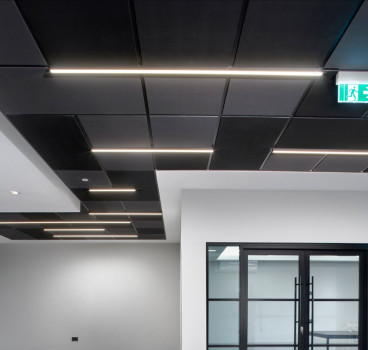How Does OSHA and HSE Enforce Their Standards?
The Occupational Safety and Health Administration (OSHA) and its U.K. counterpart, the Health and Safety Executive (HSE), are the primary bodies governing workplace safety. Their role is to reduce risks across all workplaces, including the high-hazard construction industry. Here’s what you need to know about what they do, how they enforce their standards and how companies can stay compliant.
The Role of OSHA and HSE in Construction
Both agencies create and uphold regulations designed to prevent injuries, illnesses and fatalities at work, including on building sites. Their authority in their respective countries covers everything from personal protective equipment requirements to hazard communication and the safe operation of heavy machinery.
Each agency’s role has evolved in response to new risks, emerging research or lessons learned from previous incidents. For example, the HSE’s 2022-2032 strategy focuses on reforming building safety following the Grenfell Tower tragedy, as well as reducing mental health stress in the workplace and ensuring green building innovations are safe.
OSHA runs numerous regional and local directives in addition to its National Emphasis Programs (NEPs). There is currently an NEP focused on preventing falls while working at heights, which involves increased enforcement and outreach activities related to this theme.
Key Enforcement Methods
Both agencies have their own ways of working. However, the general progression of enforcement is similar.
Worksite Inspections
Inspections are the primary method for gathering facts. An OSHA or HSE compliance officer typically visits a site to assess whether it meets legal safety standards. There are several reasons an inspection might occur:
- Scheduled: Some inspections are planned and target high-hazard industries, such as construction, or focus on a specific risk, like falls.
- Employee complaints: Workers have a legal right to request an inspection if they believe their workplace contains hazards.
- Response to an incident: If a severe injury or fatality occurs, the employer is required to report it, which will almost always trigger an immediate inspection.
- Imminent danger: If an agency is notified of a current dangerous situation, it will conduct an inspection as a top priorities.
Citations and penalties
Citations and penalties are the consequences of a failed inspection. If the inspector finds violations, the company receives a formal citation. The citation will include:
- A description of the specific OSHA or HSE standard the company violated.
- An abatement date, which is the deadline for the employer to fix the problem.
- A proposed monetary fine.
A prohibition notice may be issued if there is an immediate risk. This notice stops work immediately until the risks are addressed.
Not all fines are the same. The level of severity dictates the penalty amount. A serious violation is one where a real probability of death or serious harm exists. A willful violation is one committed intentionally or with indifference to the law — these carry the highest fines.
Legal Action
Legal action is the most severe level of enforcement, reserved for worst-case scenarios, such as when a willful violation directly leads to a worker’s death. In such situations, the agencies can refer the case for criminal prosecution, which may result in imprisonment for company officials, as well as substantial fines.
How Companies Can Proactively Maintain Compliance
Forward-thinking construction firms focus on preventive strategies to minimize risk to their employees. This approach involves developing a robust internal safety program that goes beyond basic requirements.
For example, in the U.S., around 97,000 forklift-related injuries occur each year. Training can help prevent incidents, but forklift operations are dynamic, since the center of gravity shifts with each load. Workers must be empowered to understand the stability triangle that can keep them safe in an ever-changing environment. Training is not a one-time certificate — in a strong workplace culture, it is an ongoing learning experience.
Safety policies must be clear, easy to digest and displayed around the site. This is especially important in the construction industry, where multiple subcontractors may be involved since subcontracted workers are 2.7 times more likely to fall from heights, often due to unclear safety policies.
Building the Business Case for Safety
The construction industry accounts for almost half of all fatal falls at work. Aside from the human cost, accidents and injuries have a direct impact on the bottom line. Therefore, creating a workplace safety culture has significant business benefits, such as:
- Reduced costs: A safety-first workplace lowers the cost of workers’ compensation claims, legal fees and replacing injured workers.
- Improved productivity: Safe employees tend to work more efficiently.
- Better morale: Employee retention improves, leading to a more positive culture.
- Competitive edge: A strong safety record stands out, especially during a subcontractor prequalification process.
- Lower insurance premiums: Over time, a history of fewer accidents leads to lower premiums.
Working With OSHA and HSE
For the construction industry, compliance is a benefit, not a burden. A strong safety culture protects a company’s most valuable asset — its workers. OSHA and HSE have a focus on prevention, not punishment. By collaborating with these agencies and prioritizing safety, construction companies can fulfill their legal obligations and establish themselves as leaders in their field.
Additional Blogs

When fire breaks out who really knows the system
The story that caught my attention recently wasn’t about fire growth or building loss, it was about confusion. Specifically, the confusion faced by the fire service when arriving at buildings...
Read moreThe design and development of Nexus Layouts
When Zentia set out to rethink the suspended ceiling, the brief was clear: deliver greater creative freedom for designers, more distinctive visual identity for clients, and a solution that could keep...
Read more

The 100-year construction project or why longevity Is the new sustainability
For decades, the construction sector has defined sustainability through metrics such as operational energy, embodied carbon, material efficiency and circularity. These measures remain vital, but a...
Read more